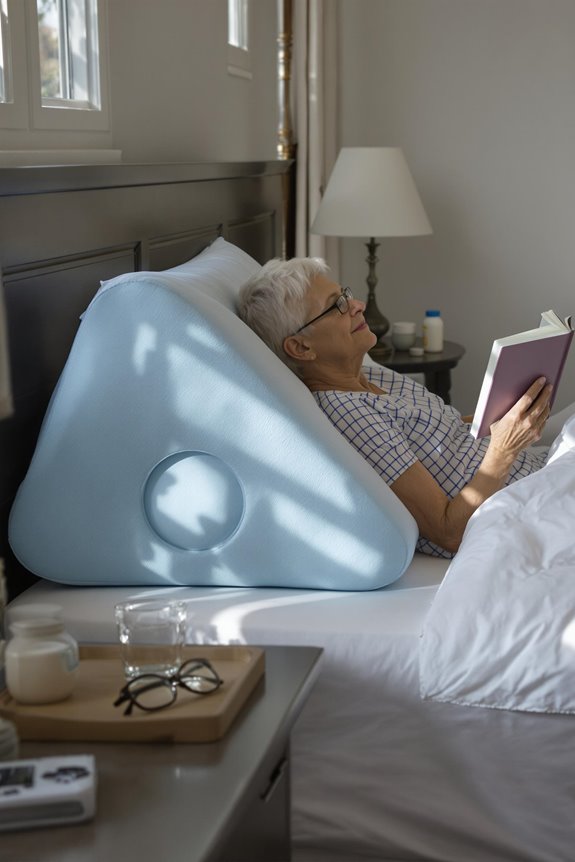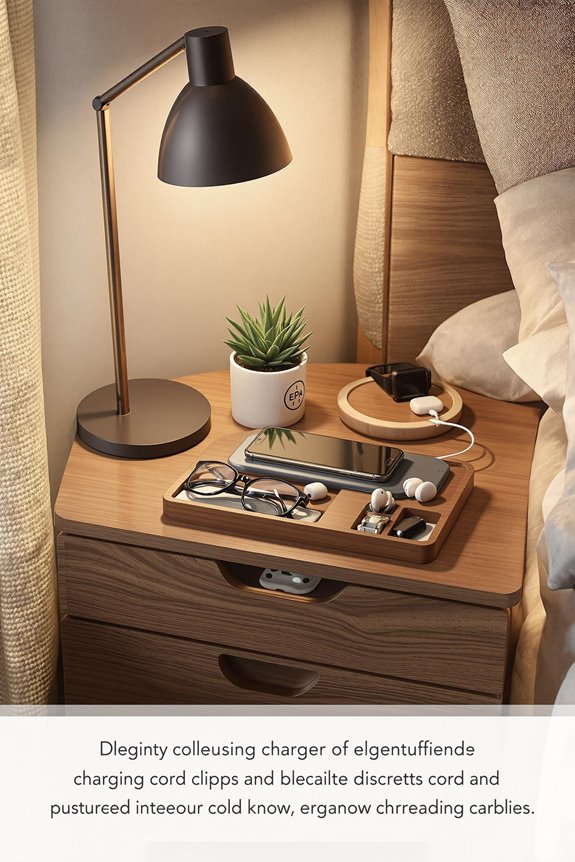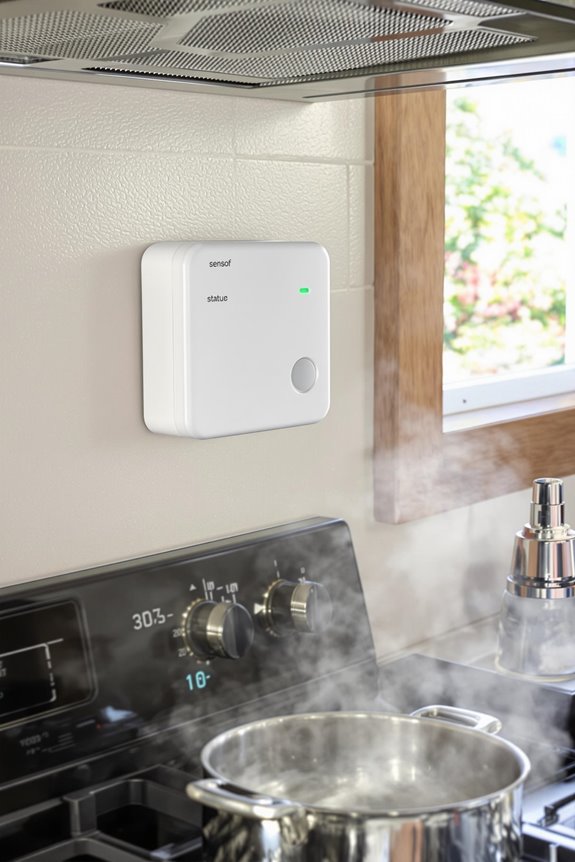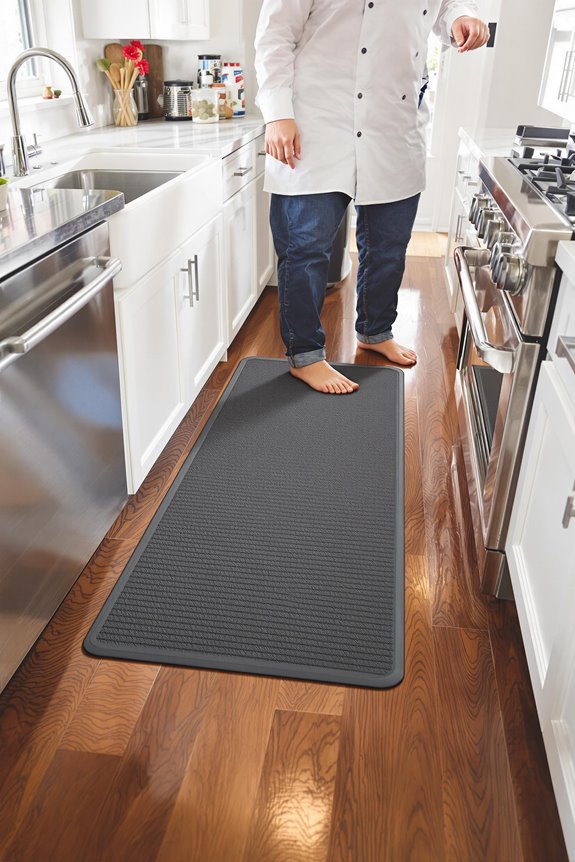Waking up to find your elderly parent wandering the hallway at 3 AM isn’t just concerning—it’s dangerous. You’re not alone in this worry, as nighttime falls represent one of the greatest risks for seniors living at home or in care facilities. Bed exit alarm pads offer a dignified solution that respects privacy while providing essential alerts when someone attempts to leave their bed unassisted. What makes these simple devices so effective, and how might they transform your caregiving experience?
Key Takeaways
- Bed exit alarm pads detect weight changes when someone attempts to leave bed, triggering alerts without invasive cameras.
- Pressure-sensitive pads cost $65-$240 and can be placed under fitted sheets for discreet monitoring.
- These systems help prevent falls by alerting caregivers when seniors with mobility issues attempt nighttime movement.
- Installation requires proper pad placement across the middle of the bed and regular testing to ensure reliable detection.
- Adjustable sensitivity settings reduce false alarms while maintaining effectiveness for seniors with dementia or fall risks.
Bed Exit Alarm Pads
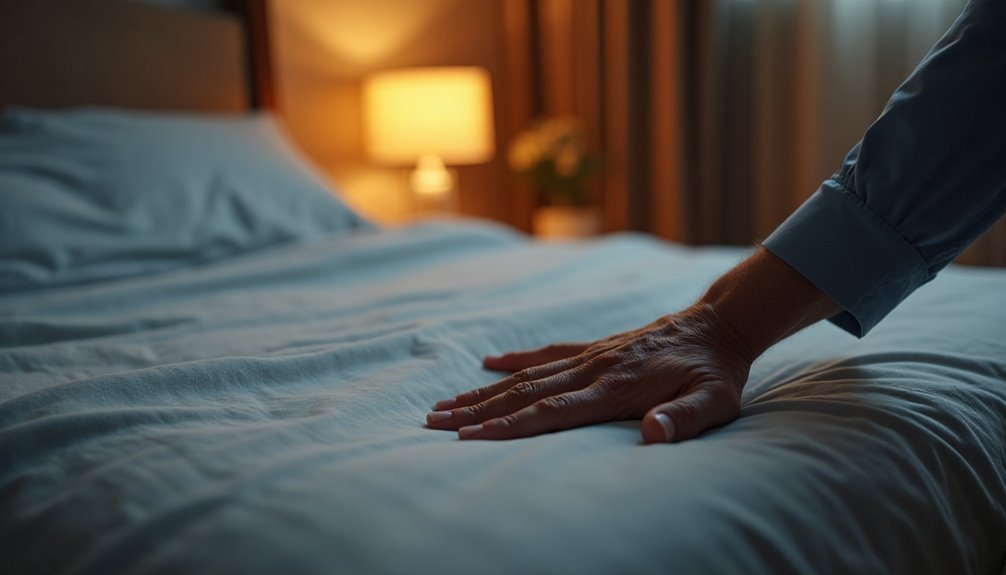
Recognizing the challenges of nighttime safety for seniors, bed exit alarm pads offer a practical solution for families concerned about fall risks.
These pressure-sensitive devices alert caregivers when your loved one attempts to get out of bed unassisted, potentially preventing dangerous falls before they happen.
Bed exit alarm pads work by detecting weight changes on the mattress. When your parent shifts their weight to stand up, the system triggers an alarm that can sound locally or connect to a caregiver’s monitoring device.
Many modern systems offer adjustable sensitivity settings to reduce false alarms while maintaining reliable protection.
Unlike cameras, these devices respect privacy while still providing peace of mind, making them an excellent choice for maintaining both dignity and safety for seniors who wish to remain independent in their own homes.
What it is and the daily problems it solves
When we talk about bed exit alarm pads, we’re referring to simple yet effective safety devices that can address several daily challenges for seniors aging in place.
These pressure-sensitive pads detect when someone leaves their bed and trigger an alert, giving caregivers precious notification time during nighttime movements.
For families concerned about fall prevention, these alarms provide a non-intrusive monitoring option without cameras. They help solve the problem of nighttime wandering, which is particularly concerning for seniors with memory issues or those at high fall risk.
The system works by immediately alerting you when your loved one attempts to get up unassisted, allowing you to respond before a potential fall occurs.
Be proactive rather than reactive with instant alerts that give you time to provide assistance before accidents happen.
Many caregivers report reduced anxiety and better sleep knowing they’ll be alerted to potentially dangerous situations occurring in another room.
Who benefits and when to use it
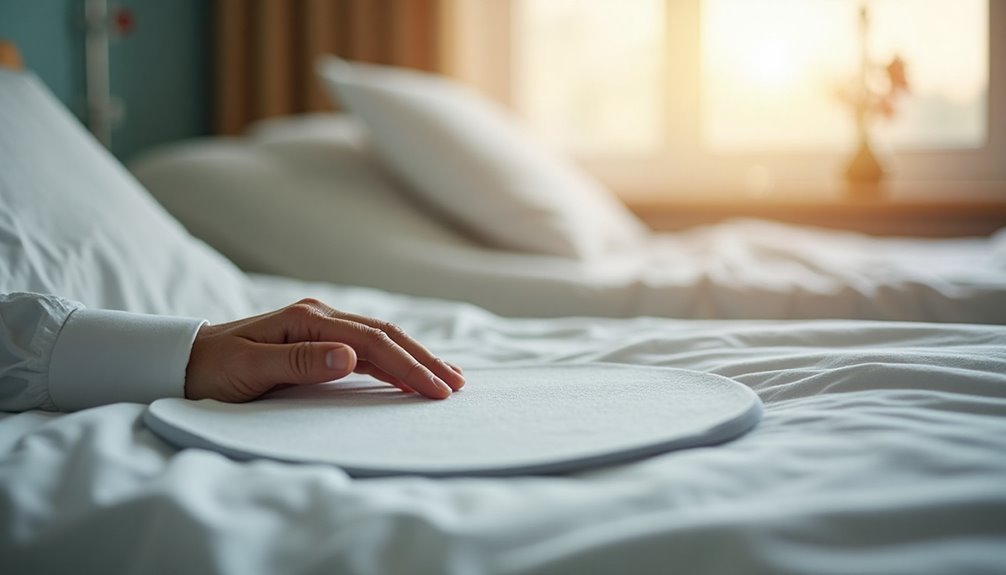
Bed exit alarm pads offer significant benefits for several specific groups of seniors aging in place.
They’re particularly valuable for those with mobility challenges, confusion at night, or a history of falls when getting up unassisted.
Your parent might need one if they:
- Have dementia or Alzheimer’s with wandering tendencies
- Recently returned home after hospitalization
- Take medications causing dizziness
- Experience nighttime confusion
- Need bathroom assistance but don’t call for help
The ideal time to introduce an exit alarm is before a serious incident occurs, especially during shifts like returning from rehabilitation or when you notice increased unsteady attempts at independent movement.
For seniors who value their privacy but need oversight, these alarms provide a dignified safety net without constant visual monitoring.
Key features to look for
When selecting a bed exit alarm pad for your loved one, knowing the key features that matter most can make all the difference in finding the right fit.
Let’s explore what to look for when comparing options so you can make an informed decision.
I’ve developed a simple checklist based on my experience helping families throughout Bergen County find the safest solutions for their aging parents.
Feature checklist
A thorough assessment of bed exit alarm features can make all the difference in finding the right system for your parent’s needs.
When evaluating options for enhancing home safety, focus on these critical elements:
- Sensitivity settings – Look for adjustable sensitivity to reduce false alarms while ensuring reliable detection when your loved one attempts to get up.
- Alarm options – Choose systems offering both audible and visible alerts, with volume control for nighttime use.
- Durability and cleaning – Select waterproof, easily sanitized pads that withstand regular cleaning.
- Connectivity features – Consider whether you need remote monitoring capabilities that connect to smartphones or existing call systems.
Remember that the best alarm system balances reliability with your parent’s dignity, providing peace of mind without creating unnecessary anxiety or embarrassment.
How to choose the right bed exit alarm pads
Choosing the right bed exit alarm pad requires careful consideration of your loved one’s specific needs and living situation.
Start by evaluating their mobility level and fall risk—less mobile seniors often benefit from pressure-sensitive pads, while those who frequently reposition might need more sophisticated options.
Understanding your loved one’s mobility challenges is the first step in finding the right bed alarm solution for their safety needs.
Consider the alarm features: Do you need remote monitoring capabilities? Would a gentler tone be better than a loud alert?
Think about practicality too—washable covers are essential for long-term use, while wireless systems eliminate tripping hazards.
Don’t forget to check the pad’s durability and warranty. The best systems balance sensitivity (detecting actual exits) with specificity (minimizing false alarms).
When in doubt, consult with your loved one’s occupational therapist, who can recommend options based on their professional assessment of your parent’s unique situation.
Placement or installation basics
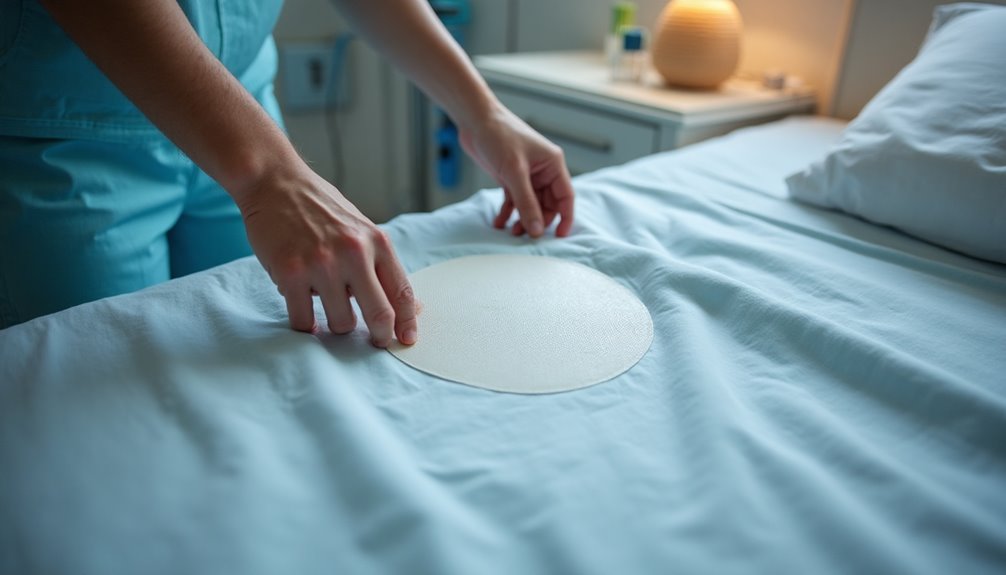
Now that you’ve selected an appropriate bed exit alarm pad, proper placement makes all the difference in its effectiveness. For most systems, position the pad across the middle portion of the bed, where your loved one’s hips or back will rest. This provides the most reliable pressure detection.
Ensure the pad sits flat without bunching under bedsheets, as wrinkles can trigger false alarms or prevent proper activation. The sensor cord should run toward the head of the bed to prevent tangling with your parent’s feet when they rise.
For chair pads, similar rules apply – center placement where weight naturally falls is essential.
Always test the system after installation by gently removing pressure from the pad to confirm the alarm triggers correctly.
Setup steps
Once you’ve selected the right location for the bed exit alarm pad, following these setup steps will guarantee the system works properly when your parent needs it.
First, clean and dry the bed surface completely before installation.
Next, remove the protective backing from the pad and place it firmly on the mattress, ensuring no wrinkles or air bubbles remain.
Proper pad placement prevents false alarms—remove backing completely and press firmly to eliminate all wrinkles and bubbles.
Connect the alarm unit’s cable to the pad, securing any loose cords to prevent tripping hazards.
Test the system by applying gentle pressure to the pad, then releasing it to confirm the alarm sounds.
Adjust sensitivity settings based on your parent’s weight – too sensitive causes false alarms, while too lax might miss actual bed exits.
Finally, demonstrate how the system works to your parent and any caregivers, making sure everyone understands how to reset the alarm after it’s triggered.
Costs and warranties

When planning your budget for a bed exit alarm system, you’ll want to evaluate both the initial purchase price and any potential ongoing costs.
Most basic bed pad alarms range from $30-$100, while more advanced systems with remote monitoring capabilities can cost $150-$300.
Understanding what you’re paying for—whether it’s enhanced sensitivity, wireless connectivity, or extended battery life—will help you make a more informed decision about which system provides the best value for your loved one’s specific needs.
Example budget
Many families are surprised to learn that bed exit alarm systems are relatively affordable compared to other aging-in-place modifications. When creating your budget, consider the complete system including the pad, alarm unit, and any accessories for maximum comfort.
| Item | Basic Option | Premium Option |
|---|---|---|
| Bed Pad | $40-$60 | $80-$120 |
| Alarm Unit | $25-$40 | $50-$90 |
| Battery Backup | $0-$10 | $15-$30 |
| Extended Warranty | Optional ($15) | Often included |
| Total Investment | $65-$125 | $145-$240 |
Most families can implement a reliable system for under $150, making this safety solution accessible for most budgets. Remember that some insurance plans may cover part of these costs when prescribed by a healthcare professional, so it’s worth checking with your parents’ provider.
Daily use and upkeep

Three key practices will help you maintain bed exit alarm pads effectively for your parents.
First, check the pad’s position daily, guaranteeing it remains under your loved one’s hips or shoulders for maximum sensitivity and accessibility.
Second, clean the pad weekly using a gentle disinfectant wipe—never submerge electronic components in water.
Third, test the alarm function regularly by applying light pressure and confirming the alert sounds properly.
For corded models, inspect connections monthly for wear.
Wireless systems require battery checks every two weeks.
Most pads have a lifespan of 6-12 months depending on usage, so note the purchase date and watch for decreased sensitivity as an indicator for replacement.
This regular maintenance guarantees the system works when you need it most.
Safety tips and mistakes to avoid
Despite their simplicity, bed exit alarm pads require proper setup to avoid potentially dangerous situations for your loved ones. Always position the pad properly under the resident’s hips or shoulders—never under their head or feet where pressure might be inconsistent.
Check connections daily, as loose wires can trigger false alarms or, worse, no alarm when needed.
Key safety tips include testing the alarm volume before each night, keeping the receiver within caregiver hearing range, and regularly inspecting for wear or moisture damage.
Never place the pad on top of multiple layers of bedding, as this reduces sensitivity.
Remember that these devices supplement—not replace—proper supervision. The best systems include backup power options, clear volume controls, and tamper-resistant features to prevent accidental disconnection by confused seniors.
Alternatives and when not to use this product
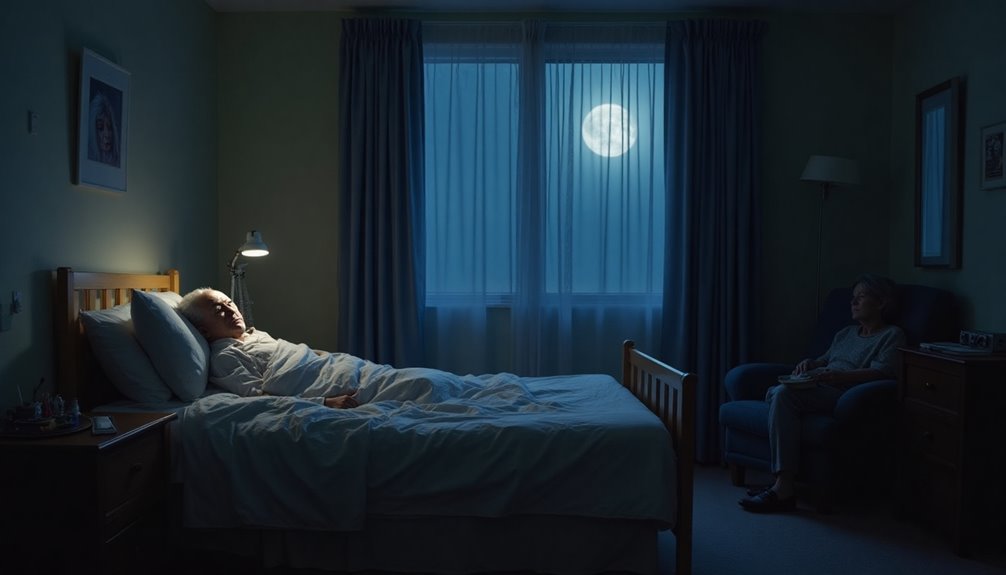
Bed exit alarms aren’t the right solution for everyone, and understanding when to explore alternatives can save you frustration and money.
Consider motion-sensing night lights, bed rails, or floor mats placed beside the bed as simpler options that don’t require monitoring devices.
These alarms may not be appropriate for seniors with dementia who might become agitated by the sounds, or for very active sleepers who trigger frequent false alarms.
If your loved one regularly needs nighttime assistance, a caregiver call button or intercom system might work better.
For tech-savvy families, smart home systems that monitor general activity patterns offer less intrusive oversight.
Remember that no technology replaces proper assessment of mobility needs – consulting with an occupational therapist about the best safety solutions for your specific situation is always worthwhile.
Frequently Asked Questions
Can Bed Exit Alarms Be Used With Memory Foam Mattresses?
Yes, bed exit alarms can absolutely work with memory foam mattresses.
You’ll need to verify the sensor pad is placed directly under the area where your parent sleeps, typically under their shoulders or hips.
Some higher-density memory foams might slightly reduce sensitivity, so check the alarm’s settings for adjustability.
I recommend testing the setup several times to confirm it triggers reliably before depending on it for nighttime safety.
Will the Alarm Startle or Confuse My Loved One at Night?
Yes, the alarm can potentially startle your loved one, especially those with dementia or anxiety.
To minimize confusion, choose systems with adjustable volume or remote alarms that alert only caregivers. Some models offer graduated response options—vibration first, then sound if needed.
Consider introducing the device during daytime hours and explaining its purpose repeatedly. Placing the control unit away from the bed can also reduce startling effects while maintaining safety benefits.
Are Wireless Systems More Reliable Than Wired Ones?
Wireless systems offer convenience without trip hazards, but reliability depends on battery life and signal strength.
Wired systems don’t need battery changes and provide consistent performance if properly installed.
In my experience, high-quality wireless systems with good battery indicators are just as reliable as wired options for most homes.
The best choice depends on your parent’s room layout and your ability to maintain the system.
How Do I Clean the Pad if There’s an Incontinence Accident?
For incontinence accidents, promptly unplug the system and wipe the pad with a damp cloth and mild disinfectant.
Never submerge the pad or use harsh chemicals that could damage electronic components. Most pads have a waterproof covering, but moisture can seep through seams over time.
Always dry thoroughly before reconnecting. For severe soiling, check your manual—some models have removable, washable covers, while others may need replacement if extensively damaged.
Can I Connect These Alarms to My Smartphone or Home System?
Most basic bed exit alarms don’t connect directly to smartphones or home systems.
However, some newer models offer Bluetooth connectivity or can integrate with smart home setups.
For more extensive monitoring, consider dedicated caregiving systems like Care.Coach or Alarm.com’s Wellness suite, which combine traditional alarms with app notifications.
When shopping, specifically look for “smart” or “connected” bed alarms if smartphone integration is important for your parents’ safety monitoring needs.
Bottom Line
You’ve now explored how bed exit alarm pads provide essential nighttime safety without privacy concerns. By selecting the right pad with appropriate sensitivity, installing it correctly, and maintaining it properly, you’ll create a safer environment for your loved ones. Remember, these devices work best as part of a thorough fall prevention strategy, giving you peace of mind while preserving dignity and independence.




